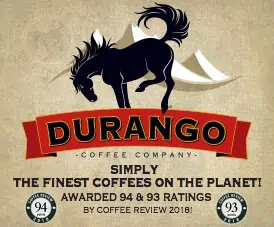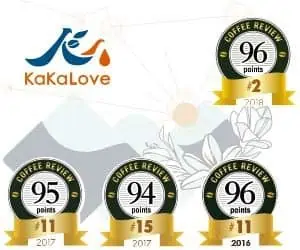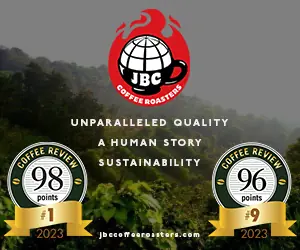A favorite question asked by bored party-goers when meeting a coffee cupper for the first time runs like this: “Is it true that there is a coffee that is… uh… eaten by, and, uh … ” “Yes,” we respond. “Kopi luwak. The coffee fruit is eaten by an animal and the coffee seeds are excreted (or depending on the crowd, a less Latinate term) collected, dried and sold as the world’s most expensive coffee. The practice is particularly associated with Sumatra. The animal is a luwak, or civet cat, an omnivore a little bigger than a house cat but resembling an American raccoon …” Most Coffee Review readers know the story well. They may even have read the reviews of luwaked coffees accompanying our December 2007 article focusing on exotic coffee procedures. Luwak coffees’ authenticity, healthfulness and general sensory tendencies are covered in some detail in that 2007 article.
I have cupped many civet coffees (or at least many coffees that represent themselves as civet coffees), over the past thirty years, all from Sumatra. They tend to betray their processing method in the odor of the roasting smoke, but not in the cup, where they usually come across as a typically musty, earthy-tasting Sumatra, though often with an odd additional note that suggests a sort of sweet, rawish nut. Some, the best and probably the most authentic, also display an attractive and unusual lush orange and floral note, though still maintaining the objectionable (for me) raw nut note.
Some New Civets Hit the Big Time
Now, however, I have a new civet coffee in the lab and I find it quite interesting, interesting enough to write this little luwak-coffee update as introduction to the review. The Doi Chaang Civet Coffee (www.doichaangcofee.com) is different from other civet coffees in three respects: 1) Least importantly, perhaps, its civets live and eat coffee fruit in Thailand rather than in Sumatra; 2) the seed-laden feces or scats are harvested by a cooperative of indigenous tribal farmers with an impressive social and economic story, a story of the kind not invoked in connection with other civet coffees; and 3) the flavor profile is genuinely different both from conventional coffees and from most other civet coffees. It combines a gentle floral-toned, orangy citrus with the odor and taste of decomposing leaves or mushrooms, but free of the cloying raw nut note that I object to in many other luwak coffees. I can’t argue that it is a great coffee in the fundamental way the finest non-luwaked coffees are great, but it definitely displays a subtly different character that sets it apart from any other coffee I have cupped, raising it above the level of joke or novelty and making it worthy of attention from those aficionados with discretionary money in their coffee budgets and curiosity about exotic coffees.
What elements in its “production” make it different from other civet coffees I can’t say for certain. The Doi Chaang cooperative argues that it tastes different from Sumatra civet coffees because it is a genuinely “wild” civet coffee with the quality control purely inhering in the sensitive ripe-fruit loving palates of unimpeded luwaks. Of course the more responsible purveyors of Indonesian luwak coffees, like Luwak Coffee (www.luwakcoffee.com) and Animalcoffee (Animalcoffee.com) make similar claims for their coffees as the genuine production of wild, uncaged civets rather than imprisoned civets, doomed (according to on-line critics) to a life of relentless coffee-fruit consumption for the cruel delectation of jaded culinary perverts in far-off cities.
Freer Civets or Better Beans?
Perhaps it is true that the Thai luwaks are less constrained than those in Indonesia that produce the better Indonesian luwak coffees. Perhaps the Thai luwaks have superior taste in ripe coffee. However, I suspect the main distinction may be in the fundamental character of the coffee itself produced by the trees of the Doi Chaang cooperative, a subtly floral and honey-charactered coffee that appears to maintain some of its fruit and delicacy right through to the end of its intimate processing method.
At any rate, I found the Doi Chaang Civet selection an unusual coffee in the cup rather than simply in the story, one that defines its own modest sensory criteria. The distinctive impression it makes is not dramatic and inescapable, but for an experienced coffee palate (hopefully attached to a sufficiently affluent consumer) its exotic character should be clear and intriguing.
2009 The Coffee Review. All rights reserved.










